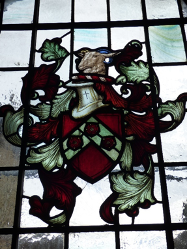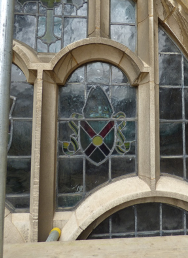The Bridge Chamber and Bridge Chapel may be small compared to their near neighbours the Castle and Cathedral, but they are still an important part of Rochester’s heritage, sitting on the riverbank, where they catch the evening light.
The Chamber is the newer structure. Built in 1879 in the Victorian Gothic style, it is the latest in a list of Bridge Chambers to act as the administrative base for the Rochester Bridge Trust. In contrast, the Chapel’s history begins with the formation of the Trust more than 600 years ago, when it was built as a place for bridge users to break their journey in prayer.
These two interconnected buildings are as much a part of the Trust’s heritage as the bridges themselves and – like the bridges – both need to be maintained.
The most recent maintenance activity for the buildings has been the renovation of the buildings’ stained glass windows.
Both the Bridge Chamber and Bridge Chapel feature leaded windows which contain stained glass relating to the history of the Rochester Bridge Trust, its founders and benefactors. These can’t easily be seen from outside, but inside they are beautiful additions to the buildings.
These windows need to be maintained, and so they have recently been restored to ensure they remain waterproof and in good order. The works were carried out by Deal-based John Corley Stained Glass Window Studio.
The internal renovations were completed in March, just before the covid-19 lockdown measures were implemented, and following the easing of restrictions in May, maintenance was able to resume on the outside.
Here you can see before and after cleaning photos of the Coat of Arms of one of the Trust’s founders, Sir Robert Knolles. This forms part of the East Window in the Bridge Chapel.Works included cleaning the glass and protective grills, repairing any broken panes, raking out loose mortar and repointing to stone surrounds and mullions (the vertical “bars” that runs up the window, keeping the glass in place).
The waterproofing of the windows is carried out using traditional leaded-light cement. The perished powdery original cement is raked out with an oyster knife (a traditional tool) and then the new cement is pushed into the void between the glass and the lead with a spatula. The ingredients of the new cement are mainly chalk and linseed oil, mixed together with natural black powder.
Below is a selection of highlights from the stained glass windows.









